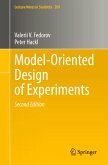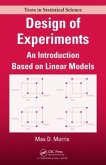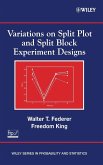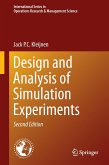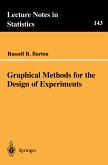The optimal design approach is applied to two common types of experiments, blocked and split-plot experiments. Blocked experiments are needed when not all the experimental observations can be carried out under homogenous circumstances, for example, when more than one batch of material is required or when the experiment takes up up more than one day. Split-plot experiments are used when it is impractical to change the levels of some of the experimental factors.
Quality has become an important source of competitive advantage for the modern company. Therefore, quality control has become one of its key ac tivities. Since the control of existing products and processes only allows moderate quality improvements, the optimal design of new products and processes has become extremely important. This is because the flexibility, which characterizes the design stage, allows the quality to be built in prod ucts and processes. In this way, substantial quality improvements can be achieved. An indispensable technique in the design stage of a product or a process is the statistically designed experiment for investigating the effect of sev eral factors on a quality characteristic. A number of standard experimental designs like, for instance, the factorial designs and the central compos ite designs have been proposed. Although these designs possess excellent properties, they can seldom be used in practice. One reason is that using standard designs requires a large number of observations and can therefore be expensive or time-consuming. Moreover, standard experimental designs cannot be used when both quantitative and qualitative factors are to be in vestigated or when the factor levels are subject to one or more constraints.
Quality has become an important source of competitive advantage for the modern company. Therefore, quality control has become one of its key ac tivities. Since the control of existing products and processes only allows moderate quality improvements, the optimal design of new products and processes has become extremely important. This is because the flexibility, which characterizes the design stage, allows the quality to be built in prod ucts and processes. In this way, substantial quality improvements can be achieved. An indispensable technique in the design stage of a product or a process is the statistically designed experiment for investigating the effect of sev eral factors on a quality characteristic. A number of standard experimental designs like, for instance, the factorial designs and the central compos ite designs have been proposed. Although these designs possess excellent properties, they can seldom be used in practice. One reason is that using standard designs requires a large number of observations and can therefore be expensive or time-consuming. Moreover, standard experimental designs cannot be used when both quantitative and qualitative factors are to be in vestigated or when the factor levels are subject to one or more constraints.
"Many books and papers discussing the blocking of experimental designs have been published since the appearance of the pioneer work of Ronald Fisher nearly a century ago. Unlike most of them, the author of the book approaches this topic as an application of the theory of optimum design. This is achieved without presenting too complex mathematical derivations of results, while those provided are clearly presented and easy to follow...A valuable addition to the literature on Design of Experiments." -Biometrics, June 2004
"The Optimal Design of Blocked and Split-Plot Experiments is a good overview of the techniques available in the optimal design of blocked and split-plot experiments, including the author's own great research in this field. The optimal design approach advocated in this book will help practitioners of statistics in setting up tailor-made experiments. It is also a good reference book for researchers and students in applied statistics." Techometrics, February 2005
"The Optimal Design of Blocked and Split-Plot Experiments is a good overview of the techniques available in the optimal design of blocked and split-plot experiments, including the author's own great research in this field. The optimal design approach advocated in this book will help practitioners of statistics in setting up tailor-made experiments. It is also a good reference book for researchers and students in applied statistics." Techometrics, February 2005



